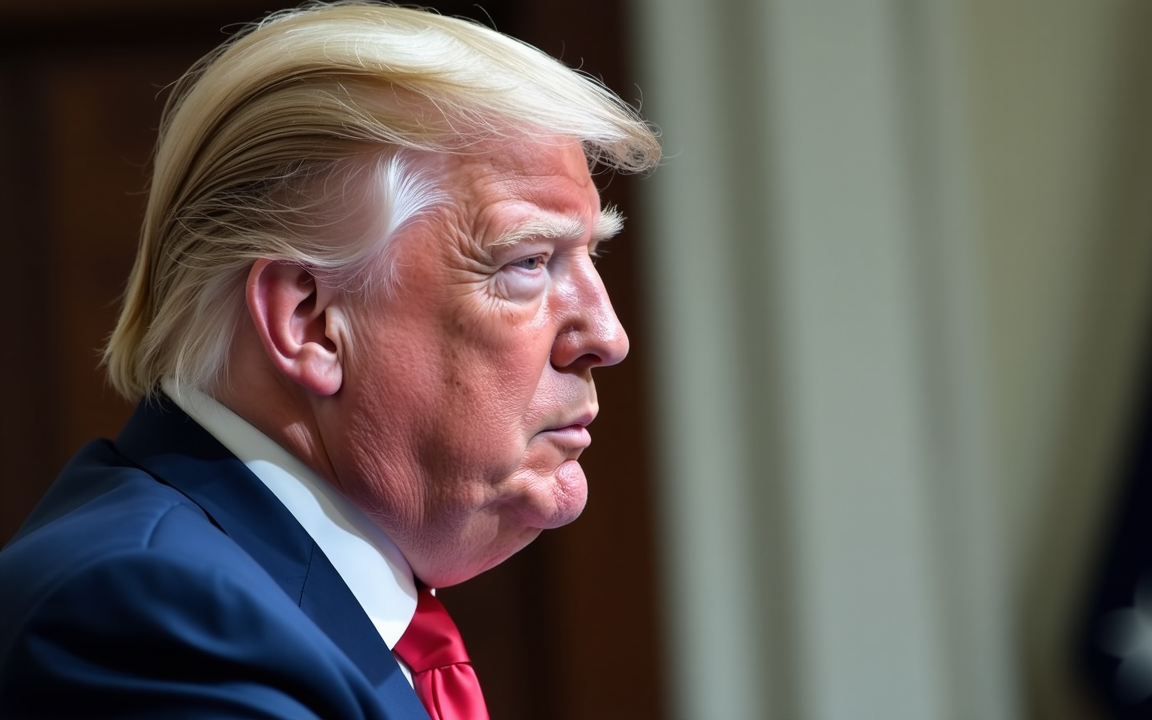President Donald Trump’s sustained public criticism of Federal Reserve Chair Jerome Powell, stemming from the central bank’s current stance against further interest rate cuts, has sent ripples of unease through financial markets.
The escalating rhetoric has fueled investor fears that the President might take the unprecedented step of attempting to remove the Fed chief, raising profound questions about legality, precedent, and the independence of the US central bank.
The core question: can Trump fire the Fed chair?
The legal authority for such a move remains notably ambiguous.
The foundational Federal Reserve Act of 1913 clearly states that members of the Fed’s Board of Governors – who are appointed by the president and confirmed by the Senate for lengthy, staggered 14-year terms – can only be removed “for cause.”
Historically, this has been interpreted to mean proven misconduct or dereliction of duty, not disagreements over monetary policy decisions.
However, a critical point of legal uncertainty arises because the text of the Act, while specifying the “for cause” removal standard for Governors, omits this specific limitation when describing the separate, four-year term of the Fed Chair, who is designated from among the seven Governors.
This omission leaves the door open to interpretation regarding the President’s power over the Chair position specifically.
Uncharted legal and political territory
Complicating matters further is the complete lack of direct legal precedent. No US president has ever attempted to fire a Federal Reserve Chair.
While there are unrelated lawsuits concerning other Trump administration firings currently navigating the courts – including one pending before the Supreme Court – their applicability to the unique structure and independence of the Fed is debatable.
Any attempt to remove Powell would almost certainly trigger a major legal battle culminating at the nation’s highest court.
Jerome Powell’s triple role: unpacking the complexity
Understanding the practical implications requires recognizing that Powell, like his predecessors, holds three distinct but intertwined roles: he is Chair of the Federal Reserve System, a member of the Board of Governors, and Chair of the powerful, rate-setting Federal Open Market Committee (FOMC).
How Trump might target these roles significantly impacts the potential outcome.
Removing Powell only as Fed Chair: If Trump attempted to strip Powell solely of the “Chair” title, legal interpretations suggest Powell could potentially remain on the Board of Governors until his gubernatorial term expires in January 2028.
With the next scheduled board vacancy not occurring until January 2026, Trump’s immediate option would likely be limited to nominating another incumbent Governor to serve as Chair.
Notably, two current Governors, Christopher Waller and Michelle Bowman (whom Trump recently nominated for a key oversight role), were appointed by Trump during his first term.
However, both have publicly emphasized the importance of Fed independence, making it uncertain whether they would immediately pivot to the rapid rate cuts Trump desires.
Targeting the FOMC leadership: The President has no direct authority over who chairs the FOMC.
This decision rests solely with the committee’s 12 voting members (the seven Governors, the New York Fed President, and four rotating regional bank presidents).
While tradition dictates the FOMC selects the Fed Chair as its leader, they could theoretically choose any member, including Powell himself if he remained a Governor.
Ousting Powell as a governor: This scenario carries the most significant ramifications. If Trump sought to remove Powell from the Board of Governors entirely – and if such a move withstood legal challenges – it would create immediate vacancies for both a Governor and the Chair position.
This would grant Trump the opportunity to nominate individuals potentially more aligned with his views.
Critically, it could also set a precedent, potentially allowing Trump to dismiss other Governors and reshape the Fed’s leadership to be more compliant with presidential wishes, fundamentally challenging the institution’s independence.
A fight in court?
Should Trump attempt a removal, Powell would possess the legal standing to challenge the action in federal court.
As a lawyer and former private equity executive, he possesses the personal financial resources necessary to fund such a significant legal undertaking.
Powell himself has consistently stated his belief that the law does not permit his removal for policy disagreements and has expressed skepticism that the ongoing court cases involving other agency firings directly apply to the Fed’s unique statutory framework.
Speculation vs. reality: will Trump act?
Despite the heated rhetoric, whether Trump will actually attempt such a move remains uncertain.
The Wall Street Journal reported last week that Trump had discussed the possibility of firing Powell and potentially replacing him with Kevin Warsh, a former Fed governor (2006-2011).
However, the report indicated Warsh advised against this course, suggesting Powell be allowed to complete his current term as Chair, which ends in May 2026.
Adding to the intrigue, White House economic adviser Kevin Hassett – himself sometimes mentioned as a potential Powell replacement – confirmed last week that the legality and implications of removing the Fed Chair were under active study within the administration.
This ongoing study, coupled with the President’s public pressure campaign, ensures that the question of Powell’s tenure and the Fed’s independence will remain a focal point of market anxiety and political debate.
The post Explainer: can Trump legally fire Fed chair Powell? Unpacking the uncertainty appeared first on Invezz

